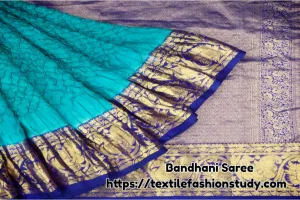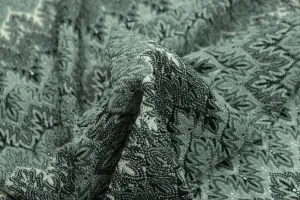Table of Contents
Grey Knit Fabric Inspection
The inspection and grading of fabric quality are one of the important functions of Quality Control in the grey or finished state. However, the grading of fabric is a difficult task, and it needs to take into account two primary considerations such as the frequency of effects and the seriousness of defects.
Objectives of Grey Knitted Fabric Inspections
It is a must to inspect the grey knit fabrics before sending them for the next process. However, the following are the objectives of knit fabric inspection in batching section. They are-
- Firstly, fabric dia and G.S.M. are inspected in the batching section.
- Secondly, to ensure the quantity of the fabric.
- Thirdly, to determine the fabric faults.
- After that, identify the knitting machine producing fabric defects and take corrective action to remedy the faults.
- Then, to ensure the required quality of the fabric,
- Therefore, to reduce cutting losses of the fabric for making a garment.
- Lastly, ensure the different quality based on the demands of the buyer or customer and classify the products accordingly.
The grading has two primary functions:
- Firstly, to classify the fabrics according to standard qualities based on the end-use and customer demands, and
- Secondly, to supply information as to the qualities actually being produced.

Image Source: Suntech Machine
Types of Knit Fabric
There are different types of knit fabrics that produce in the knitting mill. The following is the list of knit fabrics inspected in the batching section. They are-
- Single Jersey
- Lycra Single Jersey
- Single Lacoste
- Double Lacoste
- Double Jersey
- Plain Interlock
- Interlock with lycra
- Needle Top Interlock
- 1×1 Rib
- 2×1 Rib
- 2×2 Rib
- Lycra Rib
- Rib with lycra
- Very Rib
- LoopBack
- Fleece Fabric
- Fleece Terry
- Lycra Fleece
- French Terry
- Pleated Fabric
- Polo PK
- CVC
- PC
- Twill tape
General Instructions For The Final Inspection
Before sending the grey knit fabrics to the dyeing floor, the following inspection is done in the batching section:
- Firstly, all pieces will be graded on the base of 40 points per 100 linear yards Mapping will be done on each piece to ensure proper grading. Do not count more than 4 points per yard.
- Secondly, all defects must be recorded and marked in the final inspection, and an accurate account of points made to ensure proper grading.
- Thirdly, all fabric must meet specifications.
- At the end of each piece of fabric, the inspector will add up total points and decide whether the piece can be shipped as first quality or not, reworked, placed in lower quality, or cut and upgraded for shipment. Then, fifteen yards or more can be shipped as first quality.
- After that, the quality control supervisor must approve the grading of all quality levels and check the lower quality.
- Major or unsightly defects in the first and last yard of a roll or piece will be cut. All defects of one-yard length or more will be cut out of the piece consequently. Defects within the first 2 inches or the last 2 inches of a piece will not be cut out or counted in the grading.
- Open defects on the back of fabric such as drops runs and hanging picks are to be included in the grading of fabric.
- Pieces can be connected together, once each piece must be the same shade.
- All defects such as runs that extend more than a yard in length will be cut out.
- Fabric up to 70 inches will be allowed a bow of not more than 1 inch and a Bias of not more than 2 inches.
- Lastly, defects within one inch of the fabric edge will not be counted except on tubular fabrics. All defects will be counted in tubular goods.
4-point Inspection System
The 4-point system is the most popular quality measurement system for fabrics. However, the 4-point system measures in the following way. they are:
| Serial No | Fabric Faults | Serial No | Fabric Faults |
| 01. | Hole | 11. | Drop stitch |
| 02. | Oil stain | 12. | Dirt |
| 03. | Grease stains | 13. | Needle line |
| 04. | Sinker line | 14. | Thick thin place |
| 05. | Hole/pinhole | 15. | Missing yarn |
| 06. | Yn contamination | 16. | Barre |
| 07. | Slub | 17. | Sattap |
| 08. | Wheel mark | 18. | Broken needle |
| 09. | Press off | 19. | Loop |
| 10. | Double yarn | 20. | Foreign materials |
Grey Fabric Inspection System
| Length | Point | Acceptable Calculation |
| 0 to 3’’ | 1 | Up to 40 points/100 years = A |
| >3’’ to 6’’ | 2 | 21-30 Points/100Yds = B |
| >6’’ to 9’’ | 3 | 31–40 Points/100 Years = C |
| >9’’ | 4 | Above 40 Points Reject. |
| Hole <1’’ | 2 | |
| Hole >1’’ | 4 |
Fabric Grading Procedure
During the inspection, the following points need to be considered:
- All open defects or major defects count for 4 points per defect.
- Surface defects over 9-inch length counted with 4 points per defect.
- Surface defects 6 to 9 inches in length counted with 3 points per defect.
- The Surface defects 3 to 6 inches in length counted with 2 points per defect.
- Surface defects up to 3 inches in length are counted with one point per defect.
- Running defects, such as tucks, needle lines, barre, and crack marks, are judgment defects.
The Knitted fabric can be classified into three levels of quality, each one has a number of points for defects as follows.
- The First quality level: 40 points per 100 Linear Yards.
- The Second quality level: (40 – 80) points per 100 Linear Yards.
- Third quality level: 80 points or more per 100 Linear Yards.
In sum, batching is the process of getting ready the fabrics that should be dyed and processed for a particular lot of a particular order.
References:
- Handbook of Value Addition Processes for Fabrics by B. Purushothama
- Handbook on fabric manufacturing by B. Purushothama





